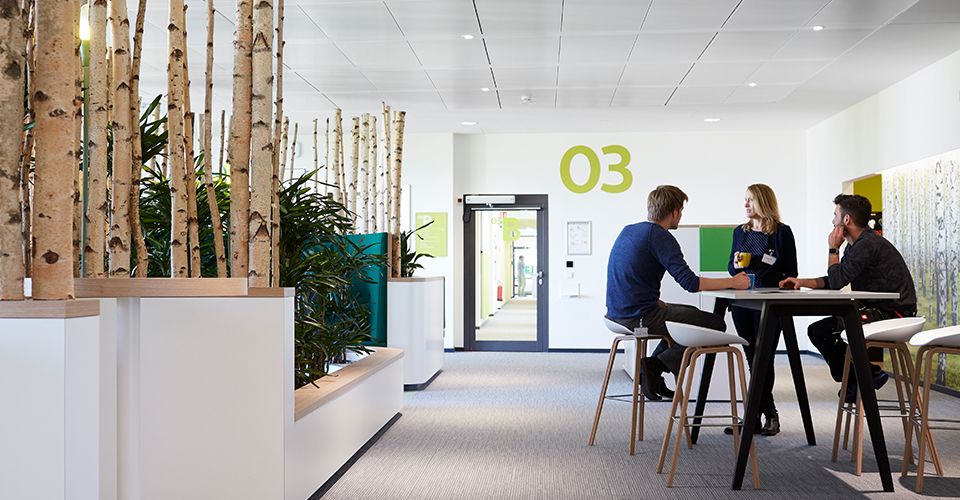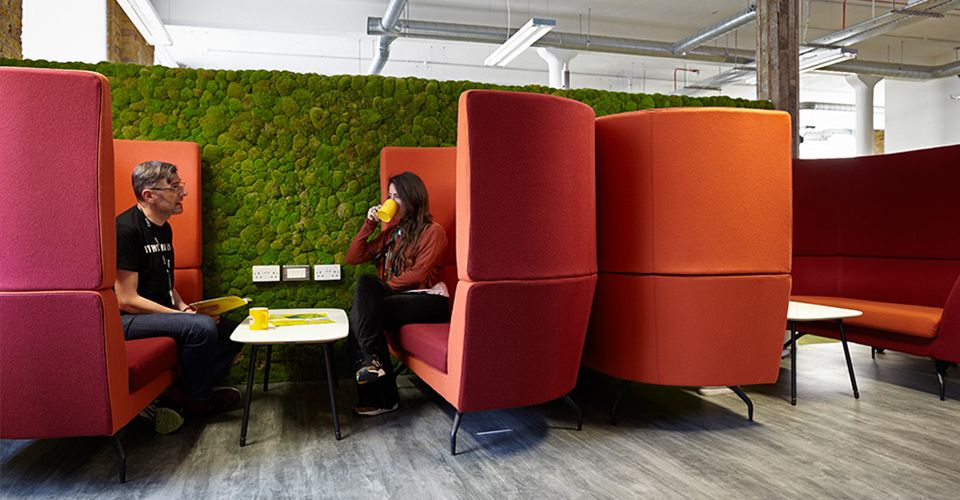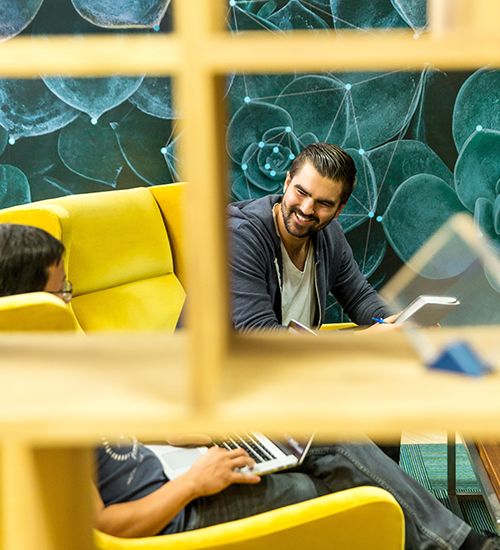What do vegetable soup, plants, and a campfire have to do with each other? Well, they can all contribute to people feeling more connected to each other. According to British architect Oliver Heath, each organisation should reinforce this sense of community. The biophilic design expert wrote a design guide for this: ‘Creating Positive Spaces by Designing for Community’.
Three community types
According to Heath, there are three types of communities. “Relational communities are the social connections between people within an organisation or team – but also in social circles. There are geographical communities as well: the physical connection between people in a country, town, neighbourhood, or building. Finally, we distinguish ecological communities: the environmental connection between people, places, and nature, like a park where people get together. With biophilic design, you can have a positive impact on all these communities.”
Heath emphasises that every organisation benefits from this. “For most companies, staff by far makes up the principal cost item. Any measure to get more out of these people is obviously valuable. It is also important to realise that 70 percent of our communication is non-verbal. In a world in which communication increasingly takes place digitally, significant signals can become lost that stimulate trust, warmth, care, and affection. Digital technology can thus form a barrier that hinders the sharing of knowledge and positive communication.”
Bringing people together
Companies therefore have a lot to gain from stimulating personal interaction between employees. “Research indicates that organisations with a greater social capital and a more extensive network of relations retain staff more easily, and perform better economically,” adds Heath. “Digital communication is sometimes most practical, but face-to-face communication remains essential. People need people. Companies that encourage mutual connections and spontaneous meetings on the work floor will profit from this in all kinds of ways.”
As an example, Heath talks about moving 1,200 Microsoft employees from five buildings to four new offices. The distance and travel time between the buildings decreased. People are now closer to each other. This positively affects collaboration and creates an estimated annual cost savings of $520,000. The move also resulted in an increase in the number of weekly meetings (from 14 to 18). Which in this case is a good sign, as there was more cross-fertilisation between departments that would before usually operate separately.

Philips HQ – Hamburg, Germany
Soup and plants
Large technology enterprises such as Microsoft, Google, and Apple have already discovered the power of biophilic design. Their offices are usually a feast for the senses, filled with natural elements, and attractive workplaces and meeting areas. Offices that clearly require a big investment. The Community Guide is however expressly intended as an inspiration source for any organisation, regardless of the number of staff or available budgets. “Using simple measures, you can already contribute to a more positive state of mind for your employees,” says Heath.
The expert illustrates this with his own design agency. “I recently bought a soup maker. Soup is fantastic. We cut vegetables each day to make soup. So for lunch, we can enjoy a delicious-smelling bowl of steaming hot soup. This is not only healthy, tasty, and cheap, but we also have our moment together at the table. We share ideas about new projects. Soup brings us together and reinforces our connection. Which is a great contrast to before, when everyone just got their own lunch or ate lunch behind their desks.”
Heath gives us another example from his own practice. “We collectively look after about 40 plants. Our office never looks the same thanks to these plants. They grow, react to sunlight, and move along with the wind. The plants need water and pruning, so employees really feel involved. When people come to visit us, all the greenery brings a smile to their face. It is not so much about the plants themselves, it is more about the dynamics of the area. You can, for instance, also use materials that change in appearance over time.”
Seven founding principles
Heath describes in the guide seven biophilic ground principles that enhance the sense of community: diversity, zoning, soft boundaries, shared areas, expanding areas, sensory areas, and triangulation. “Diversity, for example, means having different areas that connect with the physical and mental needs of employees. And zoning can be applied by creating soft boundaries between areas with carpet tiles, which makes one area flow seamlessly into the next. There is no longer a hard boundary that indicates which area is yours and which is mine.”
The most interesting principle is perhaps triangulation. “This form of biophilic design is all about bringing people together by shared experiences,” Heath explains. “Imagine sitting around a campfire with your friends. You are staring into the flames, you are getting nice and toasty and relaxed. The campfire changes your physical and mental state. Triangulation simulates this effect in the built environment, for instance by using technology, kinetic art, or natural elements. Something beautiful that people can look at together.”

Friends of the Earth office
Snow as source of inspiration
A shared experience makes you feel part of a larger whole. And such an experience was precisely the source of inspiration for the guide, says Heath. “One day, it snowed for the first time in a year. You go outside and everything looks completely different. All your senses are stimulated. This first snowfall is a wonderful experience for young and old. People interact somewhat differently. You might, for instance, have a chat with the neighbour. With biophilic, people-oriented design, you can simulate these moments of community spirit in a building.”
The architect concludes the interview with a passionate discourse. “People feel so much better in a pleasant environment that encourages interaction. Harvard has carried out research on the key to happiness. The main conclusion was that strong social ties are essential. An office is not a collection of desks and where people work as hard as they can. Organisations should look at the whole life of employees, how work fits into this, and what they can do to ensure that everyone is happy. Nature is a fantastic instrument for this.”
Want to know more? Download Oliver Heath’s guide: Creating Positive Spaces by Designing for Community.
Avans




